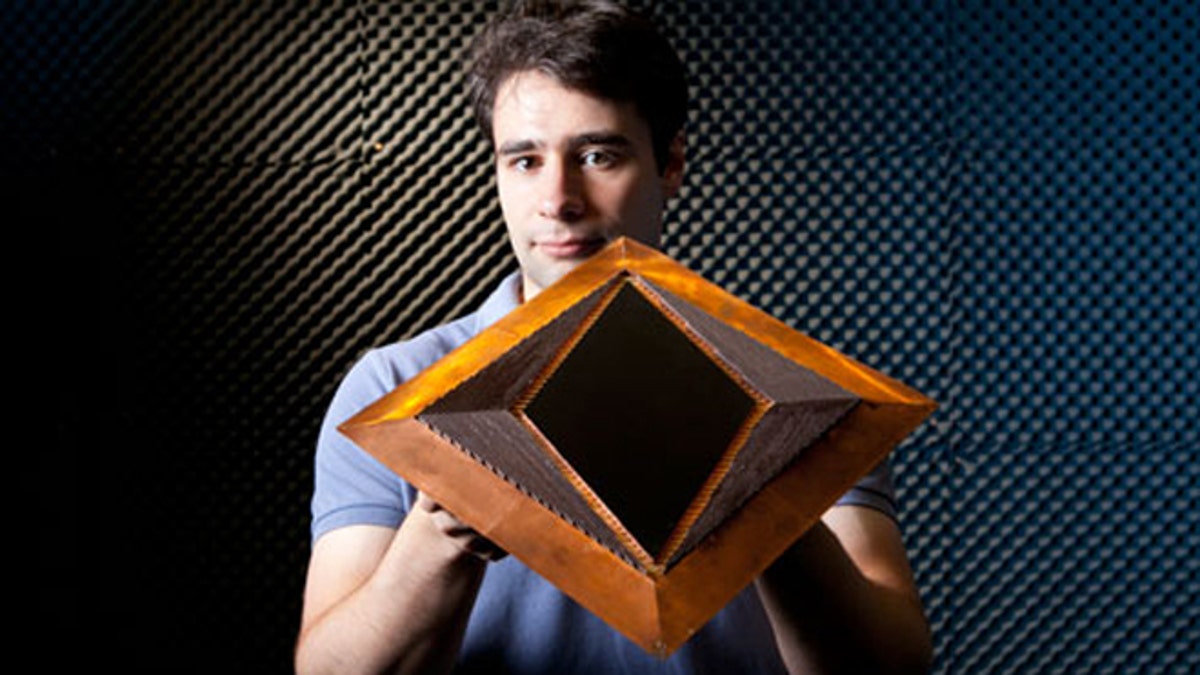
Nov. 12, 2012: A member of the lab at Duke University's Pratt School of Engineering has made a giant leap toward creating an invisibility cloak. (Duke University)
Let's hope Star Fleet perfects the technology before the Romulans get their hands on it.
Scientists have made the impossible possible, disappearing a cylinder by guiding light around it before putting those photons back on their original path -- essentially bending light around the object. This new approach achieves invisibility where others have failed. With a catch, however: It only works from one direction.
The math is incredibly complex and the materials necessary difficult to produce. And while the underpinning concepts allow invisibility in microwaves and hold promise for radar, it won't be easy to make it work at optical wavelengths, cautioned Duke University’s Nathan Landry and John Pendry of London’s Imperial College, who published their results in the journal Nature Materials.
'We built the cloak, and it worked.'
Still, it's a breakthrough six years in the making. The team made their initial discovery in 2006, a new approach to “transportation optics”: artificially structured stuff called meta-materials designed with specific properties. In this case, they move light around in particular ways to shape an electromagnetic signature, hiding an object from radar and some types of cameras.
Their “cloaking” concept ignited a meta-materials research boom and the field of invisibility exploded. But most of the most promising approaches to rely on meta-materials that reflect some of the incident light, making invisibility impartial.
This involved seeing a reflection of what lies behind an object. Now this team has introduced a diamond-shaped cloak allowing the edges to match up.
By doing so, they bent light around their 1 centimeter high, 7.5 centimeter wide cylinder without reflections.
“We built the cloak, and it worked,” said Landy, a graduate student working in the laboratory at Duke’s Pratt School of Engineering. “It split light into two waves which traveled around an object in the center and re-emerged as the single wave minimal loss due to reflections.”
There are drawbacks to even this research effort, of course. It can only hide objects so small they are not visible to the naked eye, and that success has predominantly been in wavelengths longer than what the eye can, see such as infrared, microwaves and radio.
Although media reports have hyped the breakthrough as producing an invisibility cloak for Harry Potter, this is not the case. The ultimate result would not be flexible material.
It may prove a whole lot easier to hide objects from other waves such as from heat, magnetic fields or acoustics -- think a "Get Smart" cone of silence.
For defense applications, much of the research focuses on meta-materials to make platforms from tanks, planes and helicopters to light tactical vehicles invisible – at least to certain light and sound wavelengths. BAE’s Adaptiv technology has shown huge promise in this area.
Next stop, invisible jet? Has anyone told Wonder Woman?
Ballet dancer turned defense specialist Allison Barrie has traveled around the world covering the military, terrorism, weapons advancements and life on the front line. You can reach her at wargames@foxnews.com or follow her on Twitter @Allison_Barrie.